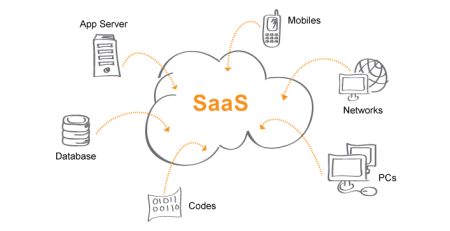Ensuring Data Quality in Cloud Storage: Best Practices for Secure and Accurate Data
Nowadays, migrating vast volumes of data to the cloud is necessary for many businesses. More industries are now transitioning to online spaces and virtual environments.
However, poor quality or compromised data can lead to inaccurate analysis, misleading business decisions, and potential security breaches. As such, industry leaders must maintain high-quality data in the cloud.
In this article, we’ll discuss the importance of data quality and offer best practices for securing your organization’s data in the cloud.
The Importance of Data Quality
Storing vast amounts of data isn’t the top priority for businesses any more. Rather, they should focus on the quality of the stored data. This includes data accuracy, consistency, and completeness.
Here are some reasons why data quality is important:
Accurate Decision Making
Data-driven insights are only as good as the data backing them. Poor quality data can mislead businesses, leading to incorrect strategic decisions.
Businesses with access to quality data are more likely to create decisions that will produce their desired results. This is because they’re making decisions based on accurate information.
Regulatory Compliance
Stringent data protection regulations bind many industries. Ensuring high-quality data can be a factor in meeting these standards.
For instance, organizations may need to delete personal customer data according to the GDPR. Not having quality data could prevent businesses from meeting their compliance requirements.
Customer Trust
Incorrect or corrupted data can impact customer relationships. Quality data ensures that businesses can serve their customers reliably.
Operational Efficiency
Lastly, high-quality data offers your organization more productivity and operational efficiency. High-quality data streamlines processes and reduces redundancy. This saves a lot of time and effort for your business.
Best Practices for Quality Data in Cloud Storage
Now that we know the importance of quality data, let’s look at the different ways to ensure quality data in cloud storage.
Regular Audits
Regular audits can offer insights into the health and quality of your data stored in the cloud. Identifying discrepancies early makes it easier to maintain the integrity and consistency of the data.
Periodic checks not only enhance data reliability. They also provide confidence in decision-making processes based on that data.
Data Validation
Setting up validation rules ensures that the data entering your system meets the predefined criteria. Mistakes, such as typos or missing fields, can be promptly identified and rectified at the entry point itself. This can help reduce the chances of data anomalies and ensure consistency.
Encryption
Data encryption ensures that the data remains unreadable to unauthorized users even if there’s a breach. Encrypting during transit prevents data interception during its transfer. Encrypting at rest ensures that stored data is shielded against potential intrusions.
Backup Regularly
Corruption or unintentional deletions may still occur if your data is stored in the cloud. A proper backup strategy should include testing the backups for recoverability ensuring they’re reliable.
In addition, storing backups in diversified locations provides an added layer of security. So, if your main cloud storage site is disrupted or compromised, you can still access your data from the backup.
Role-Based Access Control (RBAC)
Clearly defined roles ensure a structured and secure approach to data access. With RBAC, you ensure that only those with the necessary permissions can view or modify specific datasets. This minimizes the risk of accidental data modifications or deletions by unauthorized users.
Version Control
Keeping track of dataset versions allows teams to understand the evolution of the data. Should there be an error or undesired modification, version control systems enable quick reversion to a previous state. This fosters collaboration while ensuring data consistency and integrity.
Data Lifecycle Management
Organizations must properly manage the data lifecycle to ensure efficient use of storage resources. By archiving or deleting obsolete data, the system remains clutter-free.
In addition, understanding the data’s lifecycle aids in compliance. This is especially important in sectors with strict data retention policies.
Continuous Monitoring
Continuous monitoring is when you regularly analyze and audit data throughout the lifecycle. Monitoring tools provide real-time insights into data usage patterns and unauthorized access attempts.
Early detection of anomalies or suspicious activities helps in swiftly addressing potential threats. Regular monitoring ensures that you remain in control, maintaining the trustworthiness of the data.
Educate Your Team
A well-informed team is the first line of defense against data quality issues. This is why you should ensure that your team is always educated about the latest practices in cloud storage.
Hold regular training sessions and provide educational resources to your team members to ensure an educated team. Always emphasize the significance of data quality to promote a culture of diligence and meticulousness.
The Bottom Line
The cloud has transformed how we store, access, and manage data. However, its advantages also come with different challenges and responsibilities. The top challenge is ensuring the quality of the data we entrust to it.
By recognizing the importance of data quality and adhering to best practices, businesses can confidently navigate the cloud era. Once you leverage its capabilities, you can ensure that your data remains secure, accurate, and of the highest quality.













Leave a Reply